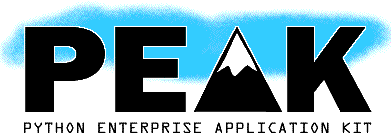

| HilfeZuAktionen/DateiAnhänge |
UserPreferences |
| The PEAK Developers' Center | FrontPage | RecentChanges | TitleIndex | WordIndex | SiteNavigation | HelpContents |
Jump to: navigation, search Nextstep Nextstep graphical user interface Company / developer NeXT OS family Unix-like Working state Historic – is code base for Mac OS X Source model Closed source Latest stable release 3.3 / 1995 Supported platforms Motorola 68000, Intel x86, SPARC, PA-RISC Kernel type Hybrid kernel License Proprietary EULA NeXTSTEP (also written NeXTstep, NeXTStep, and NEXTSTEP[1]) was the object-oriented, multitasking operating system developed by NeXT Computer to run on its range of proprietary workstation computers, such as the NeXTcube, and later, other computer architectures.
Nextstep 1.0 was released on September 18, 1989, after several previews starting in 1986.[citation needed] The last version, 3.3, was released in early 1995, by which time it ran not only on the Motorola 68000 family processors used in NeXT computers, but also Intel IA-32, Sun SPARC, and HP PA-RISC-based systems. Apple Inc.'s Mac OS X is a direct descendant of Nextstep.
Contents [hide] 1 Description 2 Naming 3 Influence 4 Versions 5 See also 6 Notes 7 References 8 External links
[edit] Description Nextstep was a combination of several parts:
a Unix operating system based on the Mach kernel, plus source code from BSD Unix Display ?PostScript and a windowing engine the Objective-C language and runtime an object-oriented (OO) application layer, including several "kits" development tools for the OO layers Nextstep was notable for the last three items. The toolkits offered considerable power, and were used to build all of the software on the machine. Distinctive features of the Objective-C language made the writing of applications with Nextstep far easier than on many competing systems, and the system was often pointed to as a paragon of computer development, even a decade later.
Nextstep's user interface was refined and consistent, and introduced the idea of the Dock, carried through ?OpenStep and into Mac OS X, and the Shelf. Nextstep also created or was among the very first to include a large number of other GUI concepts now common in other operating systems: 3D "chiseled" widgets, large full-color icons, system-wide drag and drop of a wide range of objects beyond file icons, system-wide piped services, real-time scrolling and window dragging, properties dialog boxes ("inspectors"), window modification notices (such as the saved status of a file), etc. The system was among the first general-purpose user interfaces to handle publishing color standards, transparency, sophisticated sound and music processing (through a Motorola 56000 DSP), advanced graphics primitives, internationalization, and modern typography, in a consistent manner across all applications.
Additional kits were added to the product line to make the system more attractive. These included Portable Distributed Objects (PDO), which allowed easy remote invocation, and Enterprise Objects Framework, a powerful object-relational database system. The kits made the system particularly interesting to custom application programmers, and Nextstep had a long history in the financial programming community.
[edit] Naming The name was officially capitalized in many different ways, initially ?NextStep, then NeXTstep, and also NeXTSTEP. It became NEXTSTEP (all capitals) only at the end of its life. The capitalization most commonly used by "insiders" is NeXTSTEP. The confusion continued after the release of the ?OpenStep standard, when NeXT released what was effectively an ?OpenStep-compliant version of Nextstep with the name OPENSTEP.
[edit] Influence The first web browser, ?WorldWideWeb, was developed on the Nextstep platform. Some features and keyboard shortcuts now commonly found in web browsers can be traced to Nextstep conventions. The basic layout options of HTML 1.0 and 2.0 are attributable to those features available in NeXT's Text class.[2] The game Doom was also largely developed on NeXT machines,[3] as was Macromedia ?FreeHand, the modern "Notebook" interface for Mathematica, and the advanced spreadsheet Lotus Improv. The software that controlled MCI's Friends and Family program was developed using Nextstep.[4][5]
About the time of the 3.2 release, NeXT teamed up with Sun Microsystems to develop ?OpenStep, a cross-platform object-oriented API standard derived from Nextstep. Implementations of that standard were released for Sun's Solaris, Windows NT, and NeXT's version of the Mach kernel. NeXT's implementation was called OPENSTEP for Mach and its first release (4.0) superseded Nextstep 3.3 on NeXT, Sun and Intel IA-32 systems.
Following an announcement on December 20, 1996,[6] on February 4, 1997, Apple Computer acquired NeXT for $429 million, and used the OPENSTEP for Mach operating system as the basis for Mac OS X.[7]
A free software implementation of the ?OpenStep standard, GNUstep, also exists.